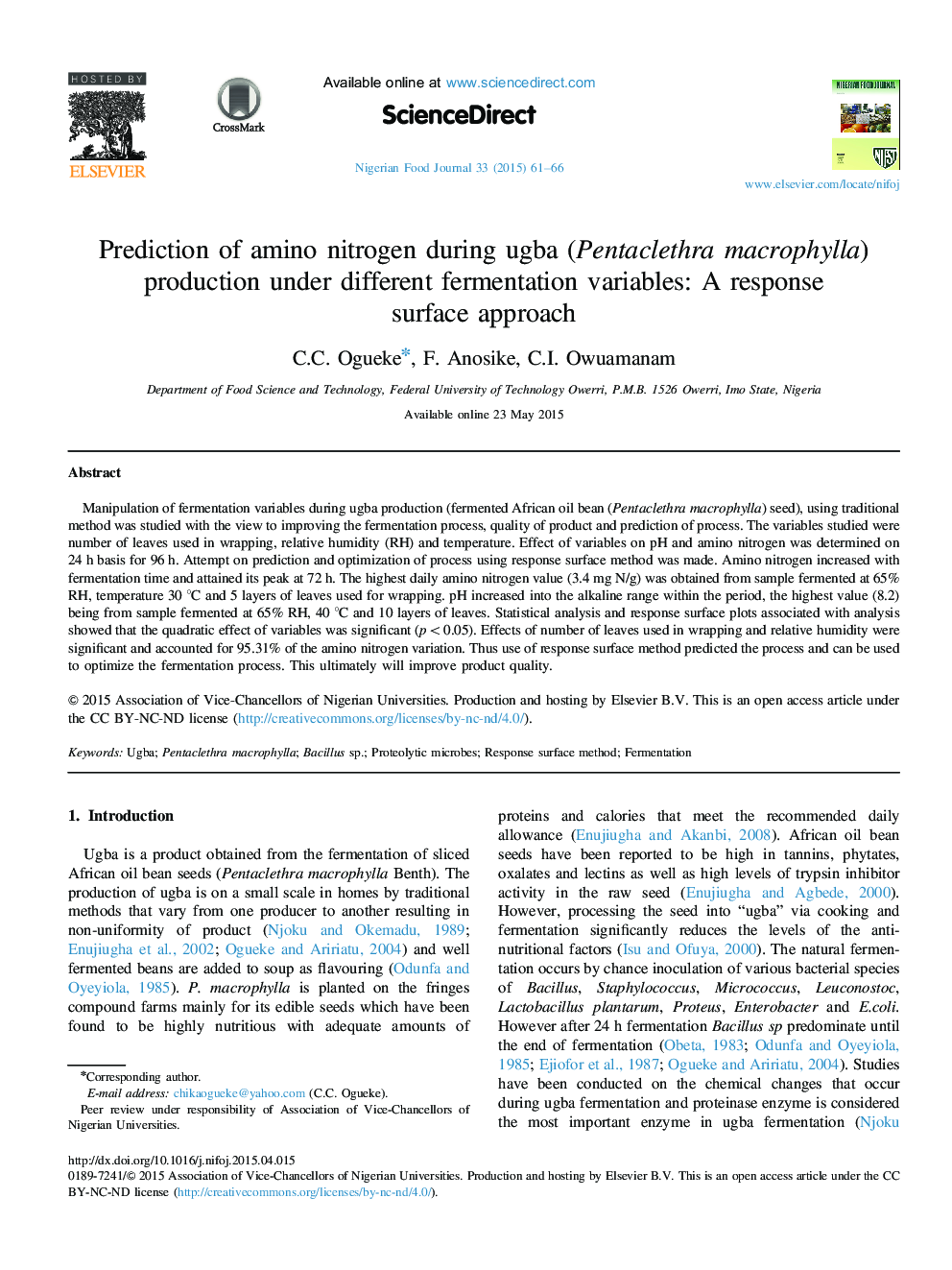| Article ID | Journal | Published Year | Pages | File Type |
|---|---|---|---|---|
| 4565665 | Nigerian Food Journal | 2015 | 6 Pages |
Manipulation of fermentation variables during ugba production (fermented African oil bean (Pentaclethra macrophylla) seed), using traditional method was studied with the view to improving the fermentation process, quality of product and prediction of process. The variables studied were number of leaves used in wrapping, relative humidity (RH) and temperature. Effect of variables on pH and amino nitrogen was determined on 24 h basis for 96 h. Attempt on prediction and optimization of process using response surface method was made. Amino nitrogen increased with fermentation time and attained its peak at 72 h. The highest daily amino nitrogen value (3.4 mg N/g) was obtained from sample fermented at 65% RH, temperature 30 °C and 5 layers of leaves used for wrapping. pH increased into the alkaline range within the period, the highest value (8.2) being from sample fermented at 65% RH, 40 °C and 10 layers of leaves. Statistical analysis and response surface plots associated with analysis showed that the quadratic effect of variables was significant (p<0.05). Effects of number of leaves used in wrapping and relative humidity were significant and accounted for 95.31% of the amino nitrogen variation. Thus use of response surface method predicted the process and can be used to optimize the fermentation process. This ultimately will improve product quality.
